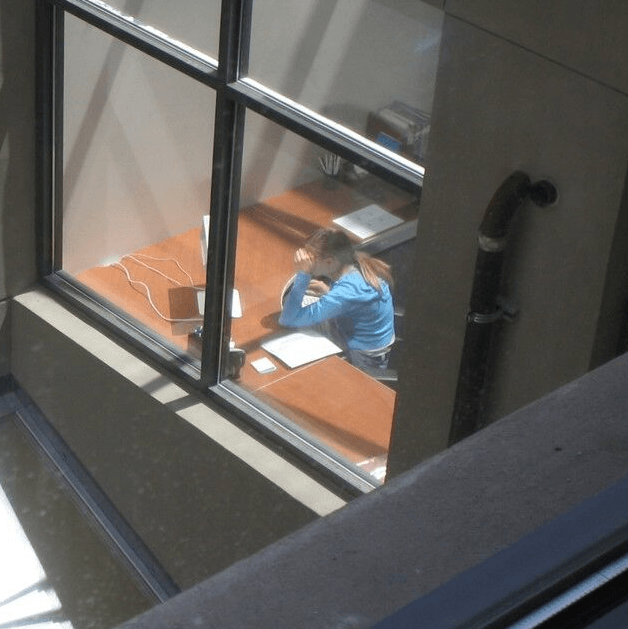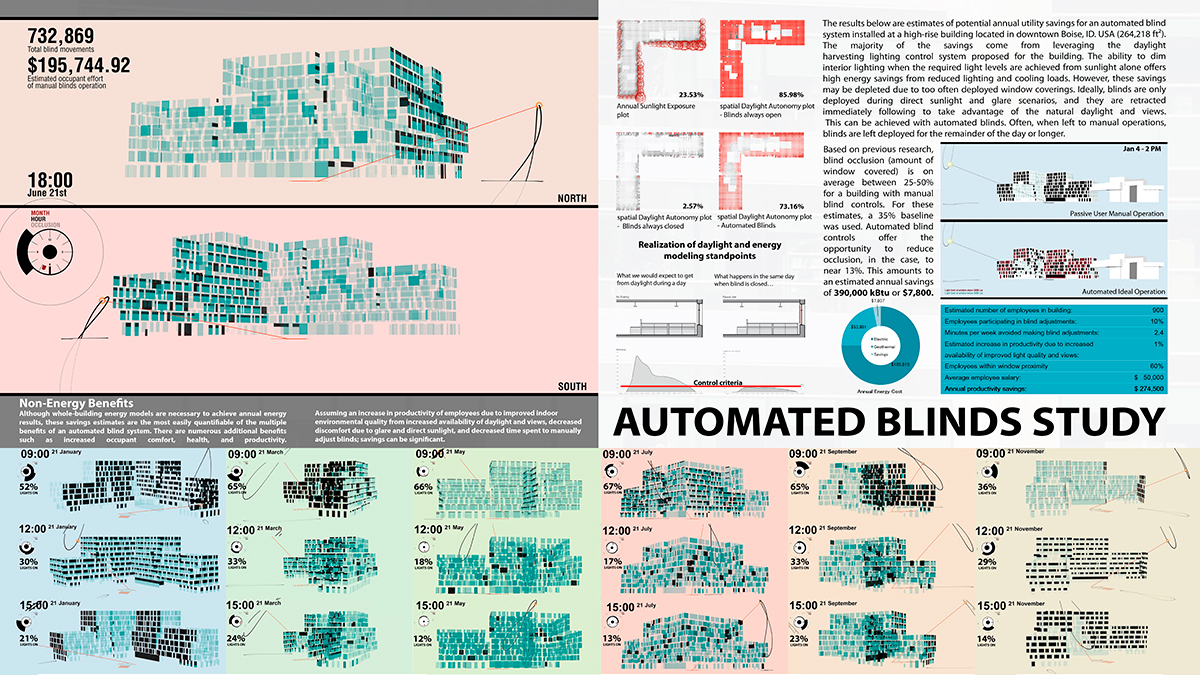The Interplay of Light and Comfort

Summary
Light has a huge impact on our lives; from our health, to our visual comfort and satisfaction with our local environment, to the way in which we behave indoors and operate our buildings. The way we use, or don’t use, light in the built environment can vary dramatically, yet very often lighting design strategies don’t take into account the behavior of the very people for whom that built environment is designed- the occupants. For example, blinds and other shading devices are utilized to block bright sunlight, but have the unintended consequence of cooling an indoor space, which can impact the energy use of a building. Moreover, those shading strategies may cover more window space than necessary, as in the case of needing to block a small portion of the window to reduce glare, or they may be left in place when building occupants have left, blocking sunlight for longer periods of time than necessary.
Our research has several focal points: 1) understanding the human preference for lighting based on type, color, intensity, and social context, 2) integrating human preference and human behavior into building simulation modeling to better predict how a building will be used and its energy expenditure, and 3) design strategies to balance the use of daylight, artificial light, and shading devices to improve human comfort and reduce energy expenditure. One of these strategies is the use of automated blinds, a concept for which Amir Nezamdoost(University of Oregon Architecture PhD student) and Alen Mahic (University of Oregon research assistant) were awarded the Regional Award for The Americas in the International VELUX Award for Students of Architecture competition, presented at the World Architecture Festival in Berlin. The implementation of automated blinds in a building in Boise, Idaho was estimated to save390,000 kBtu, amounting to $7,800 annually in energy costs.



0 Comments